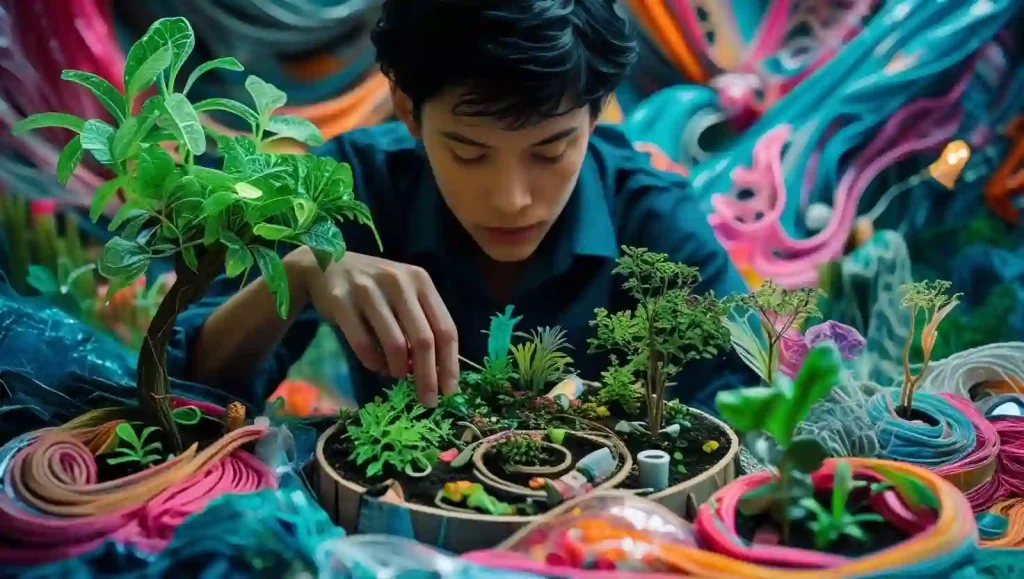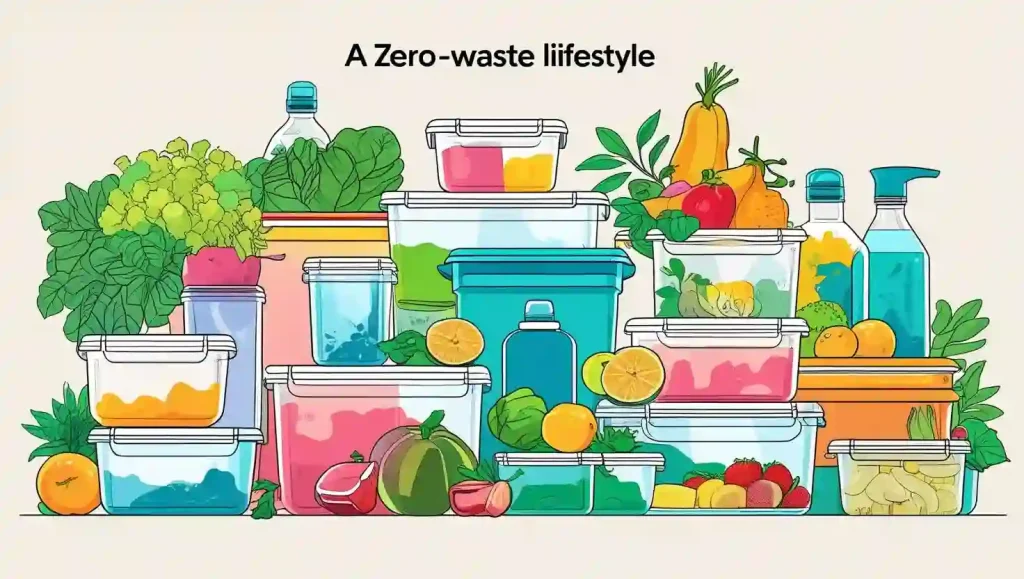Zero-waste living is more than popular—it’s a lasting way to help preserve the Earth. A zero-waste household minimizes trash by rethinking how we consume, reuse, and recycle. With science-based tips and sustainable hacks, you can transform your home into an eco-friendly haven, contributing to a circular living model that reduces waste and promotes sustainability. Let’s dive in!
Why Go Zero-Waste? The Science Behind It
Zero-waste households work toward producing little to no landfill-bound waste. According to scientific studies, the average household produces about 1,600 pounds of waste annually, much of which could be avoided through sustainable practices. Landfills contribute to methane emissions, a potent greenhouse gas, while recycling and composting can cut household waste by up to 50%. By adopting eco-friendly living, you’re not just reducing trash—you’re helping combat climate change with science-based solutions.
Ready to make your home a zero-waste champion? Here are seven actionable steps to get started, packed with sustainable hacks and green technology insights.
Step 1: Rethink Your Consumption to Reduce Trash
The foundation of a zero-waste household is reducing what you bring in. Smart consumption is key to eco-friendly living, and science helps us make better choices by analyzing product lifecycles.
- Buy Less, Choose Better: Opt for durable, high-quality items over single-use plastics. For example, swap plastic water bottles for stainless steel ones, which studies show have a 90% lower environmental impact over their lifetime.
- Shop in Bulk: Purchasing grains, nuts, or spices in bulk cuts down on packaging waste. Research indicates bulk buying can reduce plastic use by up to 70%.
- Choose Sustainable Brands: Look for companies using green technology, like biodegradable packaging or plant-based materials, which decompose naturally unlike traditional plastics.
Pro Tip: Use apps like Good On You to find brands committed to sustainability and circular living. This science-based tip ensures your purchases align with a waste-free lifestyle.
Step 2: Master Composting for Organic Waste
Composting is a game-changer for a zero-waste home. This process converts organic waste into fertile soil while minimizing landfill contributions and methane release. Science shows that composting can divert up to 50% of household waste.
- Start Simple: Get a backyard compost bin or a countertop composter for small spaces. Add “greens” (food scraps, coffee grounds) and “browns” (dry leaves, cardboard) in a 1:3 ratio for optimal decomposition, as recommended by soil scientists.
- Use Green Technology: Electric composters, like Lomi, use heat and aeration to break down waste in hours, making composting easy for busy households.
- Avoid Common Mistakes: Skip meat, dairy, and oily foods to prevent odors and pests. A study from the EPA found that proper composting reduces greenhouse gas emissions by 30% compared to landfilling organic waste.
Pro Tip: Sprinkle your compost with crushed eggshells to add calcium, boosting soil health for your garden—a perfect sustainable hack!
Step 3: Recycle Right with Science-Based Strategies
Recycling is a cornerstone of circular living, but it’s not just about tossing items into a bin. Science helps us recycle smarter to maximize impact.
- Know Your Materials: Not all plastics are recyclable. PET (used in soda bottles) is widely accepted, but polystyrene (like foam cups) often isn’t. Avoid recycling mistakes by understanding your community’s specific guidelines.
- Embrace Advanced Recycling: Green technology like chemical recycling breaks plastics into their molecular components, allowing them to be reused in new products. This innovation is expanding what can be recycled.
- Clean and Sort: Rinse containers and separate materials (plastic, glass, paper) to ensure they’re processed correctly. Studies show proper sorting boosts recycling rates by 30%.
Pro Tip: Download apps like Recycle Nation to find recycling centers near you, making it easier to live a waste-free lifestyle.
Step 4: Upcycle Like a Pro
It’s the creative process of repurposing used items into functional, fresh pieces—reducing waste in the process. It’s a fun, eco-friendly way to embrace sustainability.
- Get Creative: Turn glass jars into storage containers, old T-shirts into reusable tote bags, or wine corks into plant markers. These sustainable hacks keep items out of landfills.
- Use Science-Based Tools: Apps like Pinterest or Instructables offer upcycling ideas backed by community-tested methods, ensuring your projects are practical and durable.
- Save Resources: Upcycling reduces the need for new materials. For example, repurposing wood pallets into furniture cuts deforestation, a key factor in sustainability.
Pro Tip: Host an upcycling party with friends to swap ideas and materials, building a community around circular living.
Step 5: Swap Single-Use for Reusable
Items used only once—like coffee cups, straws, and plastic bags—are leading sources of waste at home. Switching to reusables is a simple sustainable hack for a zero-waste home.
- Invest in Reusables: Use silicone food bags, beeswax wraps, or stainless steel straws. These eco-friendly alternatives last years and reduce plastic waste, which takes 500 years to decompose.
- Leverage Green Technology: Smart water bottles with UV-C purification or reusable coffee cups with heat-retaining tech make sustainability convenient and stylish.
- Make It a Habit: Carry a reusable kit (water bottle, utensils, cloth napkin) in your bag. Studies show habits form in 21 days, so stick with it for a waste-free lifestyle.
Pro Tip: Look for green technology products certified by organizations like B Corp for verified eco-friendly credentials.
Step 6: Conserve Resources with Green Technology

A zero-waste household isn’t just about trash—it’s about using resources wisely. Green technology offers science-based solutions to save water, energy, and materials.
- Install Low-Flow Fixtures: Low-flow showerheads and faucets can cut water use by 40%, according to EPA studies, supporting sustainability.
- Use Smart Appliances: Energy-efficient appliances, like smart thermostats or LED bulbs, reduce your carbon footprint. Using LEDs instead of incandescent bulbs reduces energy consumption by three-quarters.
- Support Renewable Materials: Choose products made from bamboo or recycled materials, which require less energy to produce than virgin plastics.
Pro Tip: Use a smart power strip to cut standby energy waste, a small but impactful step toward eco-friendly living.
Step 7: Advocate for a Zero-Waste Future
Individual actions are powerful, but systemic change amplifies impact. Use science to advocate for a circular economy and a waste-free lifestyle.
- Support Policies: Back bans on single-use plastics or incentives for green technology. Studies show such policies can reduce urban waste by 40%.
- Educate Your Community: Share science-based tips on social media or host workshops on composting and upcycling. Knowledge spreads sustainability.
- Choose Ethical Brands: Support companies with transparent supply chains and eco-friendly practices, verified by lifecycle assessments.
Pro Tip: Follow X accounts for inspiration and updates on zero-waste innovations.
Track Your Progress and Stay Motivated
Science shows that tracking progress boosts commitment to sustainability. Use apps like JouleBug or My Little Plastic Footprint to measure your waste reduction and carbon savings. Celebrate milestones, like diverting 10 pounds of waste through composting or recycling. A 2023 study found that tracking eco-friendly habits increases adherence by 25%.

Challenges to Overcome
Transitioning to a zero-waste household isn’t always easy. Common challenges include:
- Limited Recycling Access: If local facilities are lacking, focus on reducing and upcycling first. Online resources can help locate drop-off points.
- Higher Upfront Costs: Reusables like stainless steel containers cost more initially but save money long-term. Start with one swap at a time.
- Time Constraints: Composting or upcycling can feel time-intensive. Streamline with green technology like electric composters or pre-made upcycling kits.
Conclusion: Start Your Zero-Waste Journey Today
Creating a zero-waste household is an achievable goal with science-based tips and sustainable hacks. By reducing trash, mastering composting, recycling right, upcycling creatively, swapping for reusables, using green technology, and advocating for change, you’re building a waste-free lifestyle that benefits the planet. Start small—try one tip today, like starting a compost bin or carrying a reusable water bottle. Every step toward eco-friendly living counts.
FAQs About Waste-Free Lifestyle
How to live a zero-waste lifestyle?
Embrace reusable items, compost organic waste, and avoid single-use plastics to minimize landfill impact. Shop mindfully—buy in bulk, choose sustainable packaging, and repurpose or donate instead of discarding.
How to make a zero waste home?
Start by refusing unnecessary items, reducing consumption, and reusing or repurposing what you already own. Compost food scraps, recycle properly, and switch to sustainable products like cloth towels and refillable containers.
What is the topic of reduce waste?
The topic of reducing waste focuses on minimizing resource consumption and managing materials responsibly to protect the environment. It promotes the 3Rs—Reduce, Reuse, Recycle—to lower pollution, conserve energy, and support sustainable living.
What are the 5 R’s of zero waste living?
The 5 R’s of zero waste living are: Refuse what you don’t need, Reduce what you do need, Reuse what you already have, Recycle what you can’t refuse or reuse, Rot (compost) organic waste.
What is a Waste Management System?
A Waste Management System is a structured process for collecting, transporting, treating, and disposing of waste to reduce its impact on health and the environment. It promotes recycling, composting, and resource recovery while ensuring safe handling of hazardous and non-hazardous materials.

